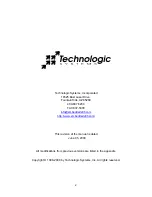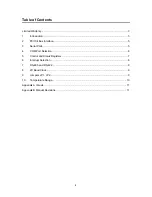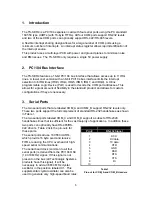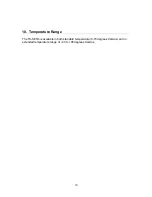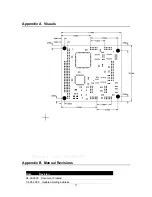
7
Table 4 documents the physical I/O address
locations for COM ports COM1 thru COM12.
Since a Xilinx programmable logic device (PLD)
is used to decode the I/O locations, it is possible
to have the COM ports decoded at any location.
Call Technologic Systems for more details.
There are four status registers associated with
each TS-SER4 board. These registers contain
the status of all the jumpers and also the status
of the interrupts for each COM port. These four
registers have different I/O locations depending
upon the Base COM port selected. This allows
for multiple TS-SER4 boards to be installed.
Table 3 documents where the base address for
these control and status registers is located.
There are a total of six different Base locations
to allow a total of six TS-SER4 boards in a
single system. Using a custom configuration in
the Xilinx PLD, it is possible to have more than
three boards in a system.
5. Control and Status Registers
There are four registers on each TS-SER4 board (unrelated to the UARTs). These
registers are documented in Table 5 below. The first three registers are “Read Only”
while in the fourth register bit 7 is “Read/Write” and bits 0-6 are “Read Only”. For all
registers, if a condition is true, a logic “1” is returned. For example, when a jumper is
present, a logic “1” is returned. For the Base + 1 address, if an interrupt is pending, the
respective status bit is set to a logic “1”.
The Base address (Base + 0) always returns a fixed value of 7A (Hex).
The Base + 1 address returns the status of the 4 interrupt sources from COM_A,
COM_B, COM_C, and COM_D. This is essential for sharing interrupts and allows the
interrupt service routine to determine which COM port has an interrupt pending. When
any of these sources has an interrupt pending, the respective status bit is set.
The Base + 2 address returns the status of the jumpers that determine the Base COM
port location (jumpers J_com1 thru J_com4) and the Base IRQ selected (jumpers J_irq1
thru J_irq8).
COM
Port
I/O location (Hex)
COM1
3F8
COM2
2F8
COM3
3E8
COM4
2E8
COM5
3A8
COM6
2A8
COM7
3A0
COM8
2A0
COM9
398
COM10
298
COM11
390
COM12
290
COM13
378
COM14
278
COM15
368
COM16
268
COM17
328
COM18
228
COM19
320
COM20
220
COM21
318
COM22
218
COM23
310
COM24
210
Table 4 – COM port I/O locations
Summary of Contents for TS-SER4
Page 1: ...i TS SER4 Manual...


